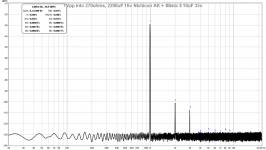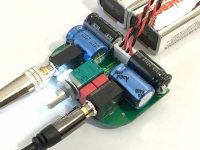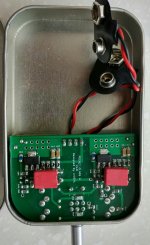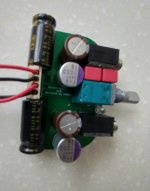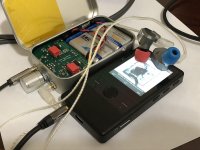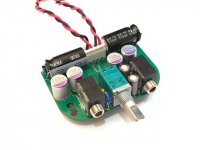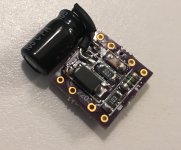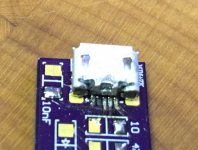Yes the regulator is on as long as the switched power supply is plugged in. Forgot that little detail, probably should add a power switch. Yes to the silence, went with your suggestion way back in post 1037. Ebay for the regulator was about 20usd, had the Apex Jr. 15000uf caps, plus most of the other items in the parts bins.
I have been letting it cook for the past day. So far I think it is a bit better sounding than the battery version.
I have been letting it cook for the past day. So far I think it is a bit better sounding than the battery version.
Awesome to hear I sounds great. The battery version is already superb. In my other thread I am seeing measurable differences in carbon film vs metal film resistors for crictial audio path like feedback loop resistor. Although this is feedbackless amp, the main source power resistors might benefit from change to carbon. Less third harmonic generation.
AKSA's Lender Preamp with 40Vpp Output
AKSA's Lender Preamp with 40Vpp Output
I just built up another one and trying out the Nichicon KA 2200uF 16v for output cap. It fits perfectly! Now this is the ultimate deep bass pocket amp. I am bypassing with 10uF Elna Silmic II on the SMT side. It measures nicely too, here is 1.00vpp into 270ohms - giving 0.027%THD and dominant second order.
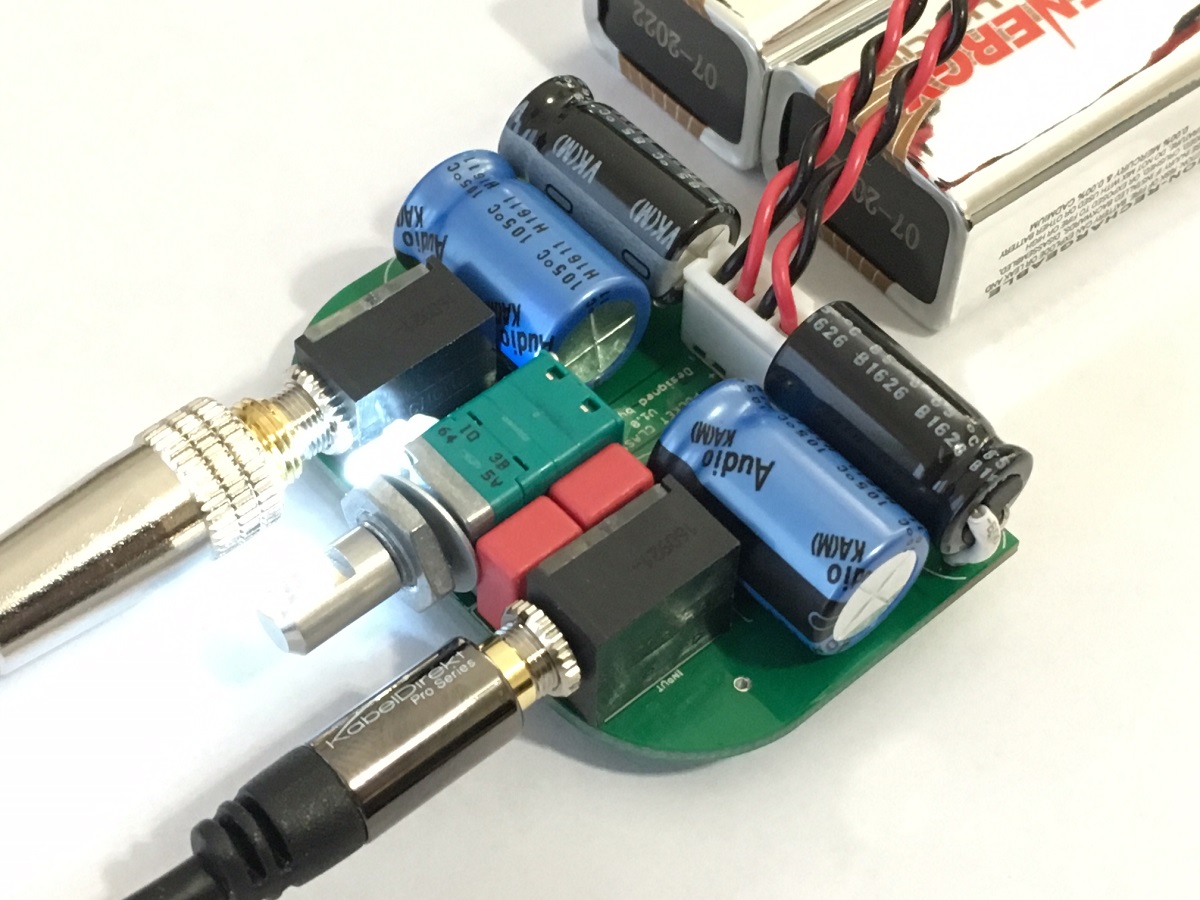

Attachments
Bought bare PCB from ETSY.
PCA was dull sounding with OS-Con 1000uF+ Silmic2 100uF, But Wima MKS2 1uF opened top, became another amp.
Still a bit dark sounding, but I like it and I like fantastic, powerful bass. It sounding awesome with Koss KSC35 and HA-FX850, less with HD650. I think voltage gain is not enough for HD650 when I use PCA with portable source. Still good enough with HD650 though!
Nichicon KW 1000uF/25V are used for power supply.
PCA was dull sounding with OS-Con 1000uF+ Silmic2 100uF, But Wima MKS2 1uF opened top, became another amp.
Still a bit dark sounding, but I like it and I like fantastic, powerful bass. It sounding awesome with Koss KSC35 and HA-FX850, less with HD650. I think voltage gain is not enough for HD650 when I use PCA with portable source. Still good enough with HD650 though!
Nichicon KW 1000uF/25V are used for power supply.
Attachments
Hi withmat,
Thanks for sharing your build and impression. That's so interesting that you think the 1uF Wima made it sound better. Byrtt had dual 1000uF Oscons and 1uF Wima and reported that it sounded more coherent without the Wima. It might be that the Silmic makes a difference. Well, you just don't know until you try it. That's what's nice about this amp are all the options for cap rolling. Funny I don't recall selling board to anyone in Korea?
Edit: Oh never mind - memory is not what is used to be. I shipped you a board on Oct 17. Glad it got there and it works! Thanks!
Cheers,
X
Thanks for sharing your build and impression. That's so interesting that you think the 1uF Wima made it sound better. Byrtt had dual 1000uF Oscons and 1uF Wima and reported that it sounded more coherent without the Wima. It might be that the Silmic makes a difference. Well, you just don't know until you try it. That's what's nice about this amp are all the options for cap rolling. Funny I don't recall selling board to anyone in Korea?
Edit: Oh never mind - memory is not what is used to be. I shipped you a board on Oct 17. Glad it got there and it works! Thanks!
Cheers,
X
Last edited:
I just got a new digital audio player - a Cayin N30 (special ed with glass back). It plays any format and does well with lossless flac files. Anyhow, I got it based on recommendation by several members on HeadFi whom really liked it. Paired with the PCA or Silicon Harmony, sounds really beautiful. Very clear, I am hearing superb detail, and low level sounds that I may have missed before. It's got a nice small form factor about same size as the PCA. The main reason I got it was that my work-issued cellphone (formerly audio player) just got upgraded to an iPhone 8 which lacks a 3.5mm jack. (Yes, it comes with a dongle that has got the smallest ADC/DAC in the world stuffed into the base of the Lightning jack - so don't expect any super sound from that). Anyhow, I thought it was time to get a dedicated lossless music player. The sound quality is very nice - seems as good if not better than what my Focusrite was putting out.
Here is the N3 with the PCA and a set of KZ-ZS5v1 quad driver IEM's. Super combo.
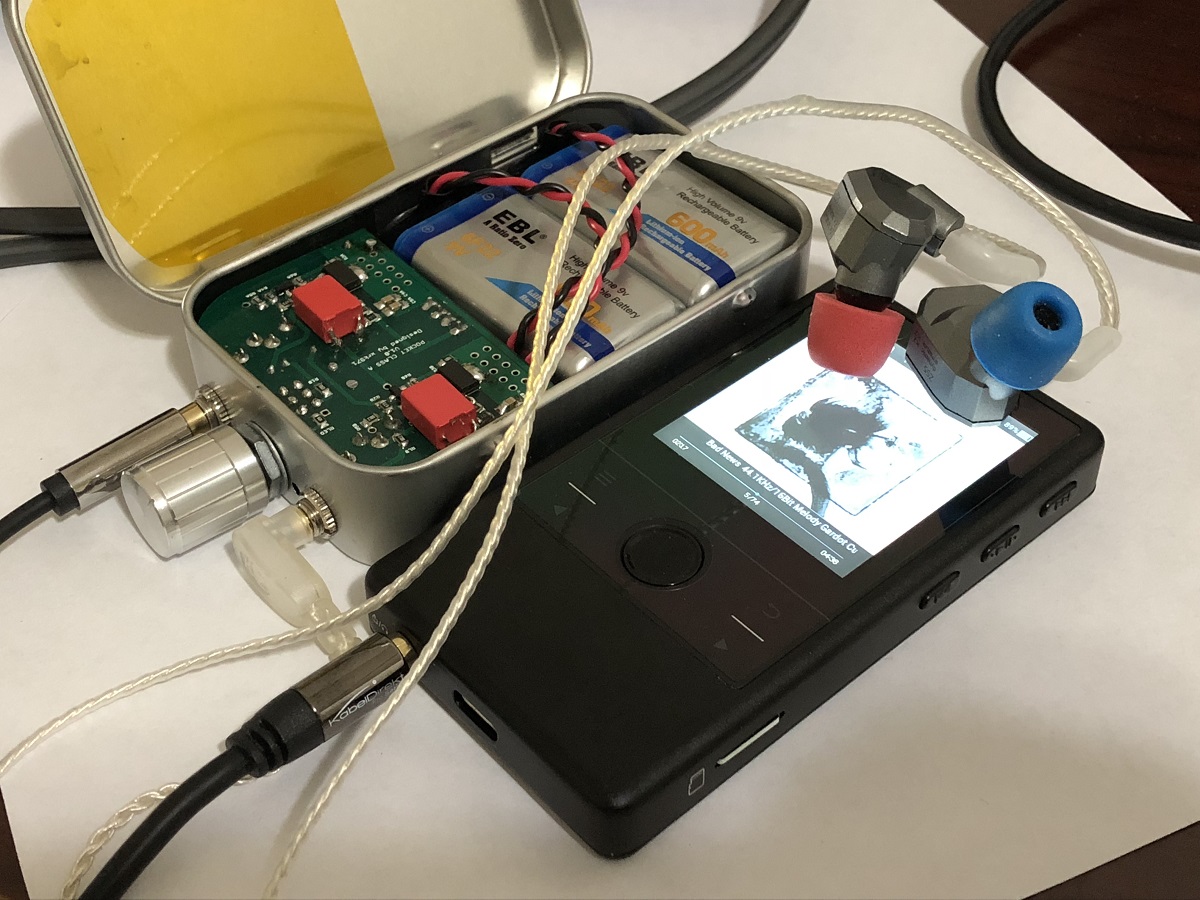
Here is the N3 with the PCA and a set of KZ-ZS5v1 quad driver IEM's. Super combo.
Attachments
It is pretty smart in that there is a capacitive touch haptic panel on front but edges have dedicated physical buttons for next track, previous track, play/pause, volume up, volume down, and screen off. I am using a 128GB microSD card and that’s so much more room than I am used to having for music library.
That N3 player is on my wish list. Looks like the perfect form factor for stacking with the mint tin. Slick. FiiO L16 is a top quality tiny cable that I use for stacking. It would match your clear IEM cable too.
So the big Nichicon even bassier than the dual Oscons? I love the way the UKA presents vocals too...very forward and full-bodied and “real” IMO.
Yes, until we can figure out where the heck Allo is sourcing these tiny supercapacitors they are using in the RPi BossDAC.
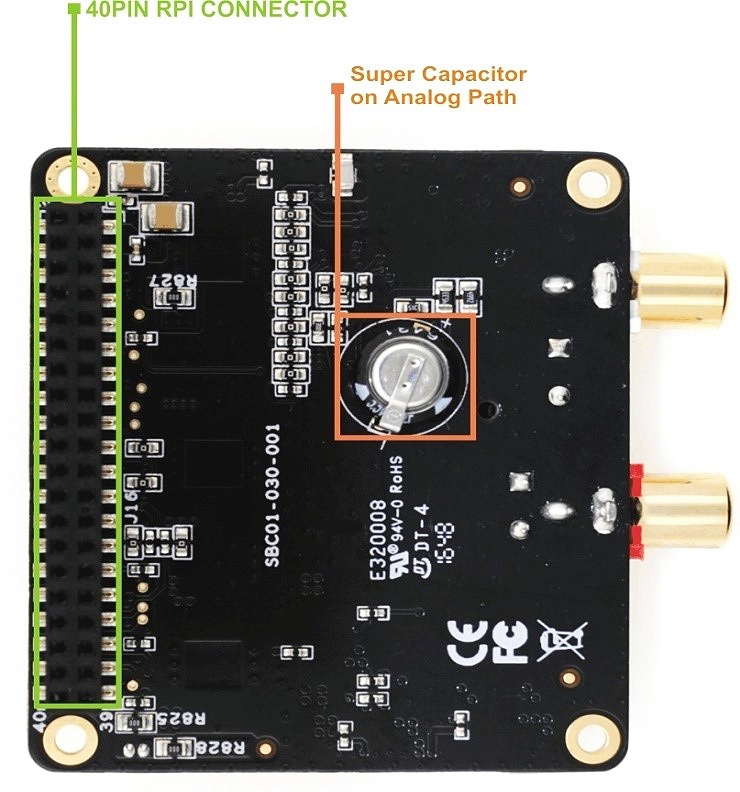
So the big Nichicon even bassier than the dual Oscons? I love the way the UKA presents vocals too...very forward and full-bodied and “real” IMO.
Now this is the ultimate deep bass pocket amp.
Yes, until we can figure out where the heck Allo is sourcing these tiny supercapacitors they are using in the RPi BossDAC.

Last edited:
X, I was thinking that Raptor had tried your exact recommended DIY LiPo setup, and still experienced the turn-on issues with it. After backreading, I see that Raptor skipped the CRCRCRC. So either method will work then?
Roughly speaking, how should the cap multiplier compare to the CRCRCRC in terms of battery life and heat dissipation. Which has better noise rejection? Obviously the cap mx wins for size! Sorry, I lack the technical prowess to draw my own conclusions here.
Also reading back through the Complete PCB/Amp thread on Head-Fi, I see that David Baldock has discovered a 18V Li-Ion pack that could possibly negate the need for either filter, unless of course the thing has a step-up inside it. He was having trouble getting one shipped here from China due to battery regulations, though.
Hmmm... At least I know that I want the USB load-sharing board either way! Oh yeah, just realized that a step-up will be required to run directly off USB.
Since I bought an assembled Pocket Class A NHB Amp, I haven't been regularly following this thread on DIYAudiio.
.
Yes, I did find, and order, an 18V Li-Ion battery pack, from a Chinese vendor. They sent a group of orders to a central location in the USA, where they were then mailed to the end users. Unfortunately, they mixed up 3 of the orders, and my battery went to someone else, who never forwarded it to me. The vendor refunded my money, but when I tried to re-order, they said that they were not able to ship those batteries to the USA any longer.
.
While the most common pre-assembled 18V Li-Ion battery packs I've been able to locate in the USA, are power drill batteries, there are a few fairly expensive (3x for $112 - $199) mower / vacuum 18V batteries on Amazon.
X, seeing your new build made me realize I had my LED wrong hahah it doesn't really show through the tin.
Are you able to post a close up of the LED and how its bent? I wanna fix mine!
As an aside, when you said bypassed with Silmics, was that the inputs, outputs or both?
Are you able to post a close up of the LED and how its bent? I wanna fix mine!
As an aside, when you said bypassed with Silmics, was that the inputs, outputs or both?
X, seeing your new build made me realize I had my LED wrong hahah it doesn't really show through the tin.
Are you able to post a close up of the LED and how its bent? I wanna fix mine!
As an aside, when you said bypassed with Silmics, was that the inputs, outputs or both?
This photo shows a little better detail of LED. Bend the pins 90 deg but angled so LED and legs look like a number “7” from the side. Use shrink tube on +ve leg (round side) and place -ve leg (flat side) toward front of PCB.
Sometimes I use 10uF 35v Silmic II to bypass large 2000uF caps on the output. Sometimes I use them as main inputs (as shown here). -ve pins face front towards volume knob. In this case, Wima film caps can be used to bypass the Silmics but I find it not needed.
Attachments
The above DAC looks like it uses a 5v supply so really doesn't output more than maybe 4vpp. In which cases, a 5.5v rating is fine.
Yeah, I was saying that the voltage rating is too low to use on the power rails of your pocket amp design. According to Allo, they are using the supercapacitor to feed the DAC's op-amp to produce maximum bass, and it is bypassed by a film cap of unspecified capacity.
Finished my first RaptorLightning cap multiplier today. Truly easy peasy as Juma's name for the circuit suggests. 
The Raptor USB load sharing board, however, has proven to beyond the limits of my soldering skills and equipment. The micro USB jack is the only hard part. Those five pins are absolutely tiny and hardly protrude from the main jack body at all. I tacked the steel housing down first and then tried to quickly drag a hot drop of solder across the pins...and ended up with a huge bridge across ALL the pins AND the nearest part of the housing lol. I then cranked up the heat and sucked up most of the solder with a solder braid, but I lifted a pad in the process. I can do most SMT but apparently not all. Honestly, those pins are so tiny, I don't think I'd ever be able to visually tell if I got every pin soldered or not. Argh. There must be an easier way to get the two power leads out of a micro USB...?
Here's a pic of my one success today.
The Raptor USB load sharing board, however, has proven to beyond the limits of my soldering skills and equipment. The micro USB jack is the only hard part. Those five pins are absolutely tiny and hardly protrude from the main jack body at all. I tacked the steel housing down first and then tried to quickly drag a hot drop of solder across the pins...and ended up with a huge bridge across ALL the pins AND the nearest part of the housing lol. I then cranked up the heat and sucked up most of the solder with a solder braid, but I lifted a pad in the process. I can do most SMT but apparently not all. Honestly, those pins are so tiny, I don't think I'd ever be able to visually tell if I got every pin soldered or not. Argh. There must be an easier way to get the two power leads out of a micro USB...?
Here's a pic of my one success today.
Attachments
Last edited:
After watching a few videos, it seems that ideally I should have a "hoof tip" on my soldering iron and also a flux pen to accomplish something like this, via drag soldering. Unfortunately I have a cheap iron and the closest I can get is a flat "C" style tip. Maybe this would work, but am still feeling like soldering this tiny jack may be out of reach for me. Hmmm
Good idea. The load sharing board is indeed one sided. Is paste pretty good about avoiding bridges across fine pitch pins?
Honestly after watching the videos I feel stupid for attrmpting this without flux. I have very fine rosin core solder and it has worked great for me so far without any additional flux. But when I watch how the solder just FLOWS with copious flux...it looks a ton easier to drag across multiple pins...and these guys are even able to pick up excess solder just with the flat tipped iron, correcting bridges almost effortlessly.
This pic shows just how tiny the pins are (hardly visible!) and how they are situated directly underneath the steel lip of the jack...not protruding enough to get my basic medium fine tip on them. One strategy I want to try is positioning the USB jack as far as possible toward the edge of the board (as pictured) so the pins are just barely over the pads, exposing the pads as much as possible. Hopefully with a finer tip and some flux, I can get good enough contact to make the solder flow back under the jack and onto the jack pins. And I have to make sure I don't touch the steel lip this time. Obviously I'll use a new board. Glad I bought extras!
Honestly after watching the videos I feel stupid for attrmpting this without flux. I have very fine rosin core solder and it has worked great for me so far without any additional flux. But when I watch how the solder just FLOWS with copious flux...it looks a ton easier to drag across multiple pins...and these guys are even able to pick up excess solder just with the flat tipped iron, correcting bridges almost effortlessly.
This pic shows just how tiny the pins are (hardly visible!) and how they are situated directly underneath the steel lip of the jack...not protruding enough to get my basic medium fine tip on them. One strategy I want to try is positioning the USB jack as far as possible toward the edge of the board (as pictured) so the pins are just barely over the pads, exposing the pads as much as possible. Hopefully with a finer tip and some flux, I can get good enough contact to make the solder flow back under the jack and onto the jack pins. And I have to make sure I don't touch the steel lip this time. Obviously I'll use a new board. Glad I bought extras!
Attachments
- Home
- Group Buys
- xrk971 Pocket Class A Headamp GB
